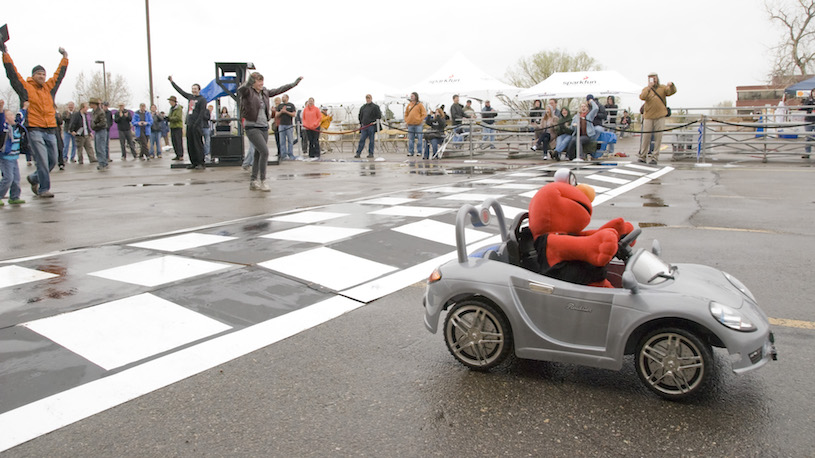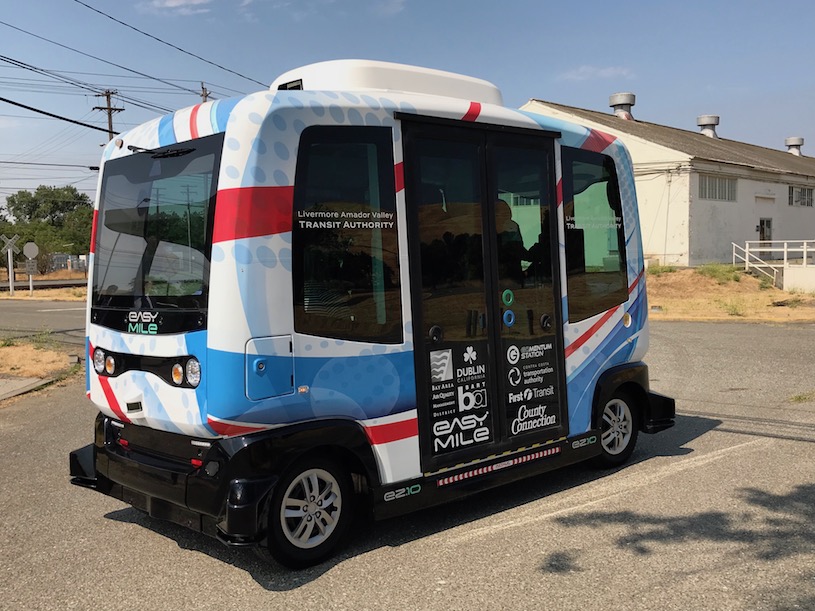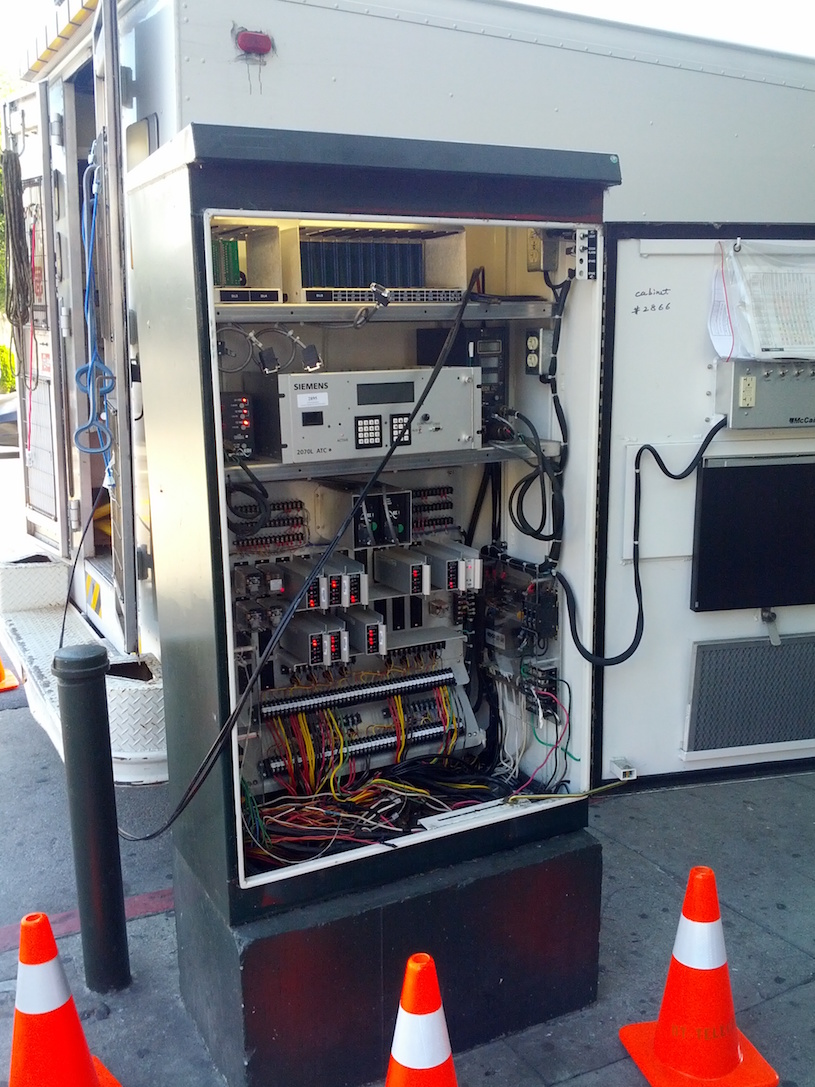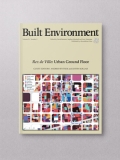Embracing the Complexity and Justice of Mobilities Automation?
Automated and Autonomous Spatial Mobilities by Aharon Kellerman, 2018, Edward Elgar Publishing
In one of the seminal technology studies publications, Langdon Winner concluded, “The things we call "technologies" are ways of building order in our world. Consciously or not, deliberately or inadvertently, societies choose structures for technologies that influence how people are going to work, communicate, travel, consume, and so forth over a very long time. In the processes by which structuring decisions are made, different people are differently situated and possess unequal degrees of power as well as unequal levels of awareness. By far the greatest latitude of choice exists the very first time a particular instrument, system, or technique is introduced. The issues that divide or unite people in society are settled not only in the institutions and practices of politics proper, but also, and less obviously, in tangible arrangements of steel and concrete, wires and transistors, nuts and bolts.” (Winner, 1980) Despite the fact that there has been several decades since blooming of science and technology studies, similarly to philosophy of technology, transport and mobility studies still lag behind in conceptualization of technology and consequently of technological transitions. This book attempts to contribute to this significant gap in transport and mobility studies, through an attempt in systematic reasoning based on a set of premises and conclusions.

Image 1: Autonomous Vehicle Competition
At the start of the book, the introductory chapter presents the book objectives, some of the central premises, and outlines the argument of the remaining seven chapters. Here, Kellerman states that the book aims to “offer and initial joint interpretation for automation as disseminated and used in highly varied mobility systems”. One of the first concepts introduced is spatial mobility, recognizing some of the essential premises introduced after the recent “mobility turn”, such as meaning and context-dependence (Sheller & Urry, 2006). In addition, Kellerman introduces the distinction between automation (i.e., self-doing) and autonomy (i.e., self-governance), recognizing that technology development and integration in transport are not recent, but rather processes largely developed in the past three centuries. In relation to the long-term development of automation and autonomous machines in general, Kellerman briefly recognizes that development is often connected to our imaginaries of the futures. Here, Kellerman introduces one of his central ideas for this book - corporeal and virtual personal mobilities should be viewed as two sides of the same coin. However, at the very end of this chapter, Kellerman also presents potentially problematic premise that automated spatial mobility, centered on self-driving vehicle (SDV), rests on the combination of two human desires. One of these desires is a wish to maximize movement across space, while the other is a wish to develop and use self-operating mechanisms. Despite the initially wide understanding of mobility as a socio-technical phenomenon presented in the book, these premises seem as a rather narrow understanding of human being, and might lead one to conclude that human ends are rather static over time.
The second chapter focuses on human automated and autonomous self-mobility, recognizing the biological need for automated bodily movements, while also focusing on a relation between autonomy and Berlin’s conceptualizations of positive and negative freedom. Furthermore, this chapter includes highlighting of the relation between mobility and citizen rights, as well as associated conceptualizations related to privacy. The chapter also outlines the levels of personal autonomy by mobility modes and technologies, relying on distinction between personal and public mobilities. In developing the relationships between human movement automaticity and personal autonomy, Kellerman speculates that natural human experience of automation may have had an impact on the desires for development of machine automation processes, while the use of these machines also allows “freeing the mind” for simultaneous thinking. Justifiably, Kellerman recognizes that car driving as a practice already involves several aspects of movement automaticity, and should thus deserve a special attention.
The third chapter focuses on automated road, rail, air, and marine traffic control, while also presenting a comparison of mobility modes by automation and autonomy in the domain of traffic control. Recognizing the limits of this book, the chapter presents snippets from history, attempting to create a sort of chronological order. In this chapter, a reader might start to notice that grounding the arguments solely in conventional transport and mobility studies premises, might not be providing enough scope and content for certain theoretical conceptualizations actually needed to understand technological transitions. For example, the author attempts to reason about why certain technologies have had such development trajectories by referring to several material factors (e.g., the size of the vehicle). Here, the argument falls short to recognize complex interplays between “.com”, “.gov”, and “.edu” types of actants, including path dependence in developed technological visions (Mladenovic et al., 2016). Moreover, such a dominant focus on the material also neglects that mobility technologies are facing complex and often unprepared policy-settings, and are highly dependent on interacting with users (Glavic et al., 2017; Hopkins & Schwanen, 2018; JafariNaimi, 2017; Jokinen et al., 2017; Pangbourne at al., 2018).

Image 2: Autonomous bus on the move
The fourth chapter focuses on the topic of automated public transportation, starting with summarizing milestones in rapid transit systems. The following list of similar summaries includes trolleybuses, trains, airplanes, ships, and passenger reservation interfaces. Here, the argument also includes a recognition of changes in organizational models, union action, regulation, and workload, which might happen with automation. However, despite recognizing some of these societal implications from automation, the argument continues to overemphasize the technological convergence and increasing automation. On the contrary, the fifth chapter, which focuses on automation of virtual mobility, introduces some additional dimensions to the technological development trajectories. The chapter starts with showcasing the chronological development of automated and autonomous operations of fixed-line telephone systems. In explaining this development, as opposed to previous chapters, Kellerman recognizes that there are associated cultural practices and even negative everyday activities. By recognizing these dimensions, we begin to see a similar span of dimensions that we can find in, by now considered fundamental, science and technology studies texts (Pinch & Bijker, 1987).
After recognizing some of these additional dimensions with respect to chapters three and four, the fifth chapter continues to describe milestones in development of automated and autonomous mobile phone systems and the Internet. Interestingly, the chapter expands the argument about virtual mobility, claiming that Internet use involves simultaneous co-presence in physical and virtual spaces, and online experience of action in virtual space. Expanding the dimensions of change from Internet technology, the book’s argument is enriched with a recognition of new modes of behaviors and actions in relation to virtual space. Based on his previous work, Kellerman successfully defends an important argument that frequent and continuous, or some would even say mundane, use of the automated Internet involves a change of human experience, a basic dimension of being. A useful example for such a change is used here, describing the blurring of separation between work and leisure. However, Kellerman strangely concludes this chapter by claiming “automation processes of traffic control and public transportation… do not present striking ramifications for the mobility activities and behavior of moving individuals”. Perhaps, Kellerman has aimed at making a sort of distinction between these technologies, assuming their power to shape the mundane is different, but has failed to provide further defendable arguments for this claim. Quite the contrary, many similar studies of various, even less mundane technologies, would argue that technologies are rarely powerless (Geels, 2002).

Image 3: Market/Valencia traffic signal controller
The sixth chapter focuses specifically on SDVs, arguing that the ongoing development is “a continuation of the prolonged and continuous efforts for mobility automation”. Although not providing much evidence for the prolongation of the process, with this claim, Kellerman is about to step into an essential logical fallacy – appeal to tradition. In the words of technology studies, one could even call this technological determinism (Jasanoff, 2016), although he does reflect about potential changes in human behavior. In continuation of this chapter, Kellerman provides a brief history of car automation, recognizing that there are three groups of players involved in SDV development, including IT, autonomous technology, and car production industries, with their own agendas. In this part in particular, similar to other parts in the book, Kellerman refers to inevitability of SDV commercialization and even “mandatory adoption”, outlining some of the projections, mostly up to year 2040. Moreover, the rest of the chapter discusses some of the implications that are also mentioned throughout the book, such as reduction of congestion, pollution, and accidents. Recognizing further “prospects and pitfalls for adoption”, the chapter reflects on such questions as trust, workload, perceived usefulness, and purchase and use costs. In this reflection, Kellerman makes a rather narrow assumption about higher productivity of workers claiming that travel time could be used for additional work, thus neglecting vast amount of occupations that cannot be performed remotely. Another critical aspect worth highlighting is that this part presents the ethical debate dominantly focused on, some would say “stale red herring” (Gogoll & Müller, 2017), trolley-problem dilemmas related to traffic accidents. Although argument about egalitarianism is made elsewhere, by highlighting trolley-problem dilemmas as the main ethical ones, Kellerman neglects that ethical debate related to SDVs has already moved beyond the narrow focus on traffic safety, to include several other aspects of mobility (Borenstein et al., 2017; Daly, 2017; Epting, 2018; Mladenovic & McPherson, 2016; Thornton et al., 2017).
The sixth chapter continues with reviews of technological development of self-driving buses, freight vehicles and drones, as well as associated changes to meanings of mobility and notion of personal autonomy. In further elaborating historical interpretations for SDV introduction, Kellerman justifiably recognizes that such technological transition would involve societal newness. However, for most of the argumentation, Kellerman retains the deterministic attitude that SDV development is ultimately inevitable, through the development in previous automation cycles. In the remaining parts of the sixth chapter, the book returns to implications for individuals and society, highlighting changes in the sense of automobility. Here, Kellermans presents some interesting anticipated effects, such as time use and travel experience in SDVs, wider access to SDVs by different societal segments, and potential restrictions on planning daily activities and commuting in such automated mobility system. Nonetheless, argument in this part does not fully distinguish between well-formed technologies for which we have established decision-making procedures (e.g., Mladenovic at al., 2017), and emerging technologies that are still in their foundational stage, and thus often involve neglected contingencies and lock-ins (Latour & Venn, 2002).
The seventh chapter focuses on citywide mobility automation, introducing a reflection on the set of urban implications. While recognizing the speed discrepancy between technological and urban development cycles, Kellerman highlights that SDVs are still largely not accounted for in strategic spatial plans. Following his premises in previous chapters, seventh chapter continues with implications for parking, urban form and other spatial aspects, as well as recreational and environmental consequences from SDV technology. In the final, eight, chapter, the book contains effective chapter summaries, based on the central assumption that “automated mobility is on its way to becoming a way of life” as “the more people tend to move, the more automation is needed”. Similarly, Kellerman claims “Following two decades of an adoption process, it is expected that in the 2040s the traffic landscape will be mostly to fully automated.” Although Kellerman recognizes implications for individual lives, and a similarity to personal virtual mobility, conclusions largely miss the opportunity to discuss if these anticipated changes are at all desirable for all societal segments. Moreover, Kellerman reiterates his argument about the human desire for automation, coupled with other general stimuli, such as economic push for efficiency. As a result, the actual range of, often contradicting, human ends and values remains unaddressed, and the discussion focuses on the technologically possible rather than societally desirable futures.
The concluding chapter continues with statements on diffusion and adoption processes, effectively assuming the citizens role as passive, and the technological development process depoliticized, despite well-known political characteristic of infrastructure (Easterling, 2014; Mladenovic, 2017; Sheller, 2018). Such claims are neglecting that large technical system transitions rely rather on social learning and interaction with a range of societal values and norms (Blyth at al., 2016; Stilgoe, 2017). In particular, by also avoiding to reflect on many potentially undesired, but unanticipated effects, these claims effectively result in narrowing down the range of visions for imagining (im)mobility futures (Mladenovic, 2019). Interestingly, one of the potentially major claims comes at the very end of this book, contextualizing SDV development in the overall introduction of everyday robots of our societies, and recognizing its scale as “colossal social experiment in the social role of robots”. The book ends with a brief outline of directions for continued research, leaving the reader with an unfulfilled expectation for a longer list of recommendations.
Returning back to Winner’s words from the beginning, and the many spread-out arguments presented in this book, reading cover to cover is highly recommended. Especially researchers in this field might find further inspiration in certain claims made in the book. However, we also have to acknowledge the limitations of this book, some of which have been highlighted above. Although the book builds extensively on mobilities paradigm, it lacks extensive use of technology studies knowledge in expanding the argumentation. This way, in addition to previous challenges, the book largely avoids the wider normative discussion from potential “technological gentrification” and reinforcement of existing inequalities, accompanied with potential negative redistribution of environmental effects. Ultimately, a question shall SDVs exist at all is never even raised. Arguably, some aspects of the book might be threat of a Faustian bargain. While dominantly highlighting societal benefits, despite the irreducible uncertainty, the book might be perpetuating position of unequal citizens’ bargaining power, thus effectively negotiating the “acceptance” of predetermined technology.
Despite these shortcomings, this book is an excellent contribution to the ongoing discussion about conceptualizing technology and technological transitions in everyday mobility. Hopefully, this book will be a significant encouragement for transport and mobility studies to embrace “thinking about thinking” approach dominant in philosophical arguments, in addition to all the quantitative and empirical methods already used. Admittedly, the use of philosophical rigor and extent of premise-based argumentation might help in directing the rapid ongoing SDV development.
References
Borenstein, J., Herkert, J. R., & Miller, K. W. (2017). Self-driving cars and engineering ethics: the need for a system level analysis. Science and engineering ethics, pp.1-16.
Daly, A. (2017). Privacy in automation: An appraisal of the emerging Australian approach. Computer Law & Security Review, 33, pp.836-846.
Epting, S. (2018). Automated Vehicles and Transportation Justice. Philosophy & Technology, pp.1-15.
Easterling, K. (2014). Extrastatecraft: the power of infrastructure space. Verso Books.
Geels, F. W. (2002). Technological transitions as evolutionary reconfiguration processes: a multi-level perspective and a case-study. Research policy, 31, pp.1257-1274.
Glavic, D., Mladenovic, M., Luttinen, T., Cicevic, S., & Trifunovic, A. (2017). Road to price: User perspectives on road pricing in transition country. Transportation Research Part A: Policy and Practice, 105, pp.79-94.
Gogoll, J., & Müller, J. F. (2017). Autonomous cars: in favor of a mandatory ethics setting. Science and engineering ethics, 23, pp.681-700.
Hopkins, D., & Schwanen, T. (2018). Governing the race to automation. In Governance of the smart mobility transition, pp. 65-84. Emerald Publishing Limited.
JafariNaimi, N. (2017). Our bodies in the trolley’s path, or why self-driving cars must* not* be programmed to kill. Science, Technology, & Human Values, 43, pp.302-323.
Jasanoff, S. (2016). The ethics of invention: technology and the human future. WW Norton & Company.
Jokinen, J. P., Sihvola, T., & Mladenovic, M. N. (2017). Policy lessons from the flexible transport service pilot Kutsuplus in the Helsinki Capital Region. Transport Policy.
Latour, B., & Venn, C. (2002). Morality and technology. Theory, culture & society, 19, pp.247-260.
Mladenović, M. N. (2017). Transport justice: designing fair transportation systems. Transport Reviews, 37, pp.245-246.
Mladenovic, M., Abbas, M., Blyth, P. L., & Kosonen, I. (2016). Intersecting our mobilities: path dependence from manually-operated semaphore to self-driving vehicles?. In 2016 IEEE International Symposium on Technology and Society (ISTAS), pp. 1-6. IEEE.
Mladenovic, M. N., Mangaroska, K., & Abbas, M. M. (2017). Decision Support System for Planning Traffic Operations Assets. Journal of Infrastructure Systems, 23, pp.05017001.
Mladenovic, M. N., & McPherson, T. (2016). Engineering social justice into traffic control for self-driving vehicles?. Science and engineering ethics, 22, pp.1131-1149.
Pangbourne, K., Stead, D., Mladenović, M., & Milakis, D. (2018). The case of mobility as a service: A critical reflection on challenges for urban transport and mobility governance. In Governance of the smart mobility transition, pp. 33-48. Emerald Publishing Limited.
Pinch, T. J., & Bijker, W. E. (1987). The social construction of facts and artifacts: Or how the sociology of science and the sociology of technology might benefit each other. Social Studies of Science, 14, pp.399-441.
Sheller, M. (2018). Mobility Justice: The Politics of Movement in an Age of Extremes. Verso Books.
Sheller, M., & Urry, J. (2006). The new mobilities paradigm. Environment and planning A, 38, pp.207-226.
Stilgoe, J. (2017). Machine learning, social learning and the governance of self-driving cars. Social Studies of Science, 48, pp.25-56.
Thornton, S. M., Pan, S., Erlien, S. M., & Gerdes, J. C. (2017). Incorporating Ethical Considerations Into Automated Vehicle Control. IEEE Transactions on Intelligent Transportation Systems, 18, pp.1429-1439.
Winner, L. (1980). Do artifacts have politics? Daedalus, 109, pp.121-136.
Assistant Professor in Spatial Planning and Transportation Engineering
Aalto University, Finland
________________________________________________________________
As ever we welcome further Built Environment blogs & tweets on this theme!
Listing Image/Image 1: Autonomous Vehicle Competition (Source: SparkFun Electronics via Flikr, CC BY-2.0, https://www.flickr.com/photos/sparkfun/4536389230/)
Image 2: Autonomous bus on the move (Source: Oregon Department of Transportation, CC BY-2.0, https://www.flickr.com/photos/oregondot/44825418311)
Image 3: Market/Valencia traffic signal controller (Source:Eric Fischer, CC BY-2.0, https://www.flickr.com/photos/walkingsf/10543765416/)


